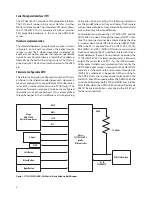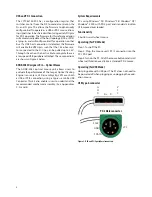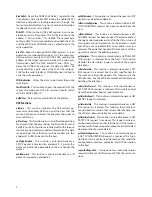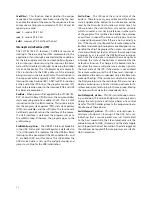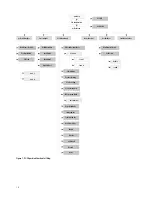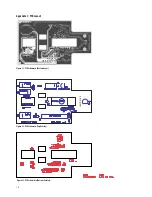
ADNK-3083
Optical Mouse Designer’s Kit
Design Guide
ADNS-3080’s Delta_X and Delta_Y registers to obtain any
horizontal and vertical motion information happening
as a result of the mouse being moved. The four-wire syn-
chronous serial port is used to set and read parameters in
the ADNS-3080, and to read out the motion, Delta_x and
Delta_y information. This motion information is reported
to the PC updating the position of the cursor. The advan-
tages of using the ADNS-3080 optical sensor are: best
tracking accuracy, sensor programming fl exibility via SPI
port, and the automatic frame rate feature (1000fps to
6400fps). The ADNS-3080 also has selectable resolution
of 400cpi or 1600cpi. Furthermore, the ADNS-3080 sensor
has excellent tracking performance on diffi
cult surfaces
such as wood and half-tone surfaces. Additionally, the
Burst mode is another special serial port operation mode
which may be used to reduce the serial transaction time
for three predefined operations: motion read, SROM
download, and frame capture. Speed improvement is
achieved by continuous data clocking to or from multiple
registers during this operation.
Motion Read
is activated by reading the Motion_Burst
register. The ADNS-3080 will respond with the contents
of the Motion, Delta_X, Delta_Y, SQUAL, Shutter_Upper,
Shutter_Lower and Maximum_Pixel registers in that order.
SROM download
uses Burst Mode to load the Avago-sup-
plied firmware file contents into the ADNS-3080. The
fi rmware fi le is an ASCII text fi le with each 2-character
byte (hexadecimal representation) on a single line.
Frame
Capture
is a fast way to download a full array of pixel values
from a single frame.
To learn more about sensor’s technical information, please
visit the Avago web site at
http://www.semiconductor.
Avago.com
Introduction
This design guide describes how a cost-eff ective USB-
-PS/2 yet feature-rich optical mouse can be built using
the Avago Technologies high performance ADNS-3080
optical mouse sensor and Cypress Semiconductor
CY7C63743-PXC USB microcontroller. The document
starts with the basic operations of a computer mouse
peripheral followed by an introduction to the ADNS-
3080 optical mouse sensor and CY7C63743-PXC USB
microcontroller. A schematic of the ADNS-3080 optical
mouse sensor to the CY7C63743-PXC USB microcontroller
buttons of a standard mouse is also shown in this docu-
ment. The software section of this design guide describes
the architecture of the fi rmware required to implement
the USB and PS/2 mouse functions.
Optical Mouse Basics
The optical mouse measures changes in position by opti-
cally acquiring sequential surface images (frames), and
mathematically determining the direction and magni-
tude of movement. The Z-wheel movement is done in the
traditional method by decoding the quadrature signal
generated by optical encoder. This design guide shows
how to connect to and manage a standard confi guration
of mouse hardware, as well as handle the USB and PS/2
protocols. Each of these protocols provides a standard
way of reporting mouse movement and button presses
to the PC.
Introduction to ADNS-3080 Optical Mouse Sensor
Avago’s ADNS-3080 optical mouse sensor is used in this
reference design as the primary navigation engine. This
Optical Navigation Technology contains an Image Acqui-
sition System, a Digital Signal Processor, and a four-wire
serial port. The CY7C63743-PXC periodically reads the



